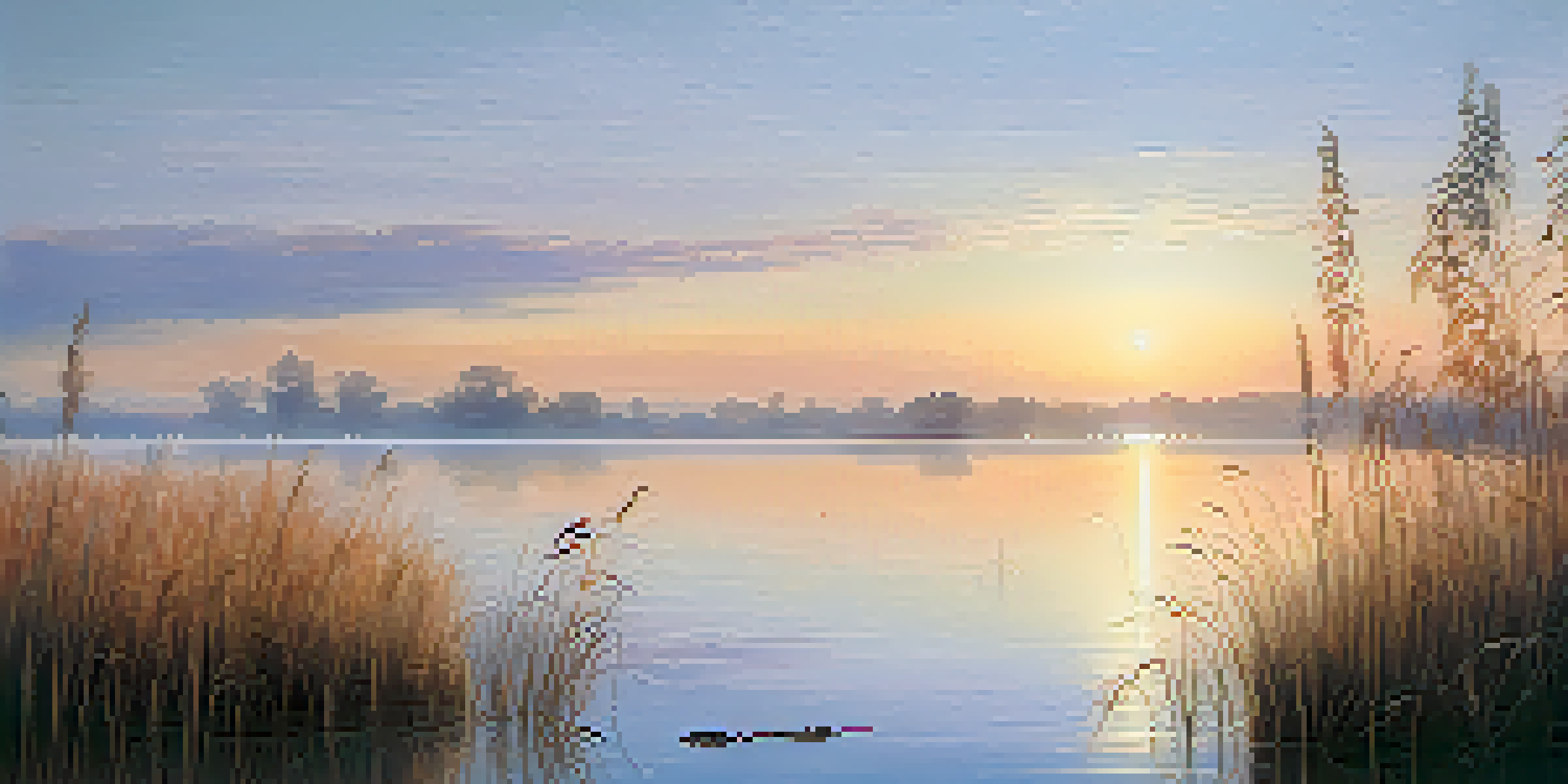Exploring the Role of Light in Nature-Inspired Paintings

The Significance of Light in Art and Nature
Light is a fundamental element in both nature and art, impacting how we perceive colors and shapes. In nature, light creates depth and dimension, allowing us to appreciate the intricate details of our surroundings. Artists harness this natural phenomenon to evoke emotions and convey messages in their paintings. By understanding the role of light, we can unlock the beauty and meaning behind nature-inspired artworks.
Different Types of Light and Their Effects
Natural light varies throughout the day and can dramatically change the look of a landscape. For example, the golden hour, just before sunset, casts a warm glow that enhances colors and shadows. In contrast, the harsh midday sun can create stark contrasts, emphasizing details in a different way. Artists often study these variations to capture the essence of a moment in their work.
Light Shapes Perception in Art
Light is crucial in both nature and art, influencing how we perceive colors, shapes, and emotions.
Light as a Tool for Mood and Emotion
Light is more than just a visual element; it sets the mood of a painting. Soft, diffused light can evoke feelings of tranquility and peace, while harsh, dramatic lighting can create tension and excitement. For instance, a serene lake at dawn bathed in soft light invites calmness, whereas a stormy sky illuminated by lightning conveys urgency. Understanding this allows artists to connect with their audience on a deeper emotional level.
The Influence of Seasons on Light Quality
The changing seasons bring shifts in light quality, which artists often reflect in their work. In the fall, for example, the angle of sunlight creates long shadows and vibrant colors as leaves transition. Winter brings a cooler, softer light, often associated with stillness and introspection. By observing these seasonal changes, artists can express the unique beauty of each time of year in their nature-inspired paintings.
Seasons Alter Light Quality
The changing seasons impact light quality, which artists reflect in their work to express the beauty of each season.
Techniques for Capturing Light in Paintings
Artists employ various techniques to capture the essence of light in their nature-inspired paintings. Techniques like glazing allow for layered color applications, mimicking the way light interacts with surfaces. Additionally, brushwork can create texture that reflects light differently, further enhancing the painting's depth. By mastering these techniques, artists can create dynamic pieces that resonate with viewers.
The Role of Color in Light Representation
Color plays a crucial role in representing light in nature-inspired paintings. Different hues can convey warmth or coolness, altering the viewer's perception of light. For example, warm colors like yellows and oranges can evoke sunlight, while cooler colors like blues and purples suggest shadows. This interplay between color and light allows artists to create a vivid sense of atmosphere in their work.
Color Enhances Light Representation
Different colors can evoke various feelings about light, allowing artists to create vivid atmospheres in their nature-inspired paintings.
Symbolism of Light in Nature-Inspired Art
Light often carries symbolic meanings in nature-inspired art, representing hope, purity, and enlightenment. Artists use light to draw attention to specific elements within their paintings, guiding viewers' eyes to the focal points. For instance, a bright beam of light breaking through clouds can symbolize divine intervention or a new beginning. Such symbolism adds layers of meaning to the artwork, inviting deeper contemplation.
Conclusion: The Lasting Impact of Light on Art
In conclusion, the role of light in nature-inspired paintings is profound, shaping not only the visual aspects but also the emotional resonance. By studying light, artists can enhance their work's beauty and meaning, inviting viewers to engage more fully with the artwork. As we appreciate these paintings, we are reminded of the delicate interplay between light and nature, celebrating the artistry that brings these elements to life.